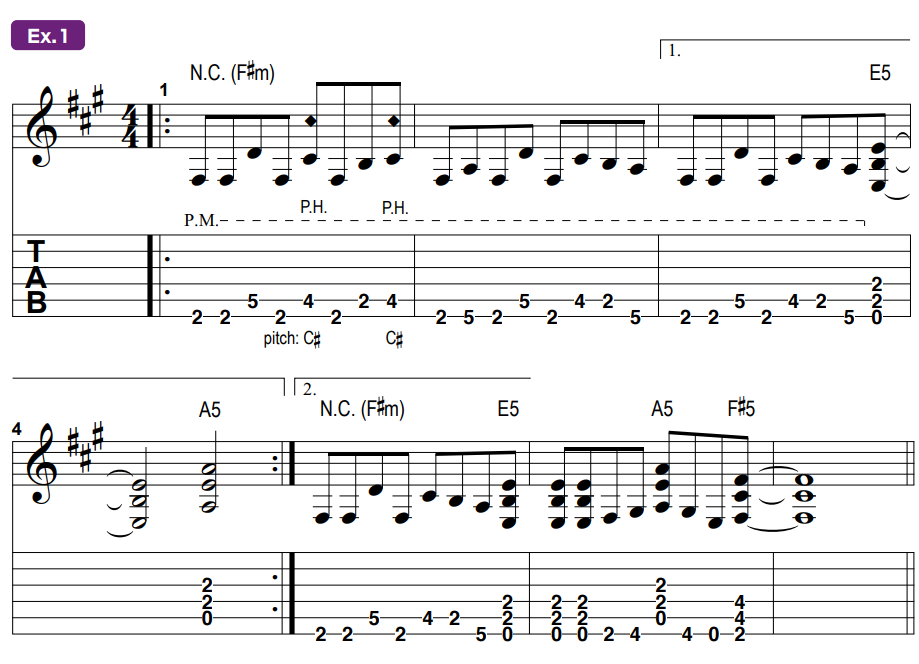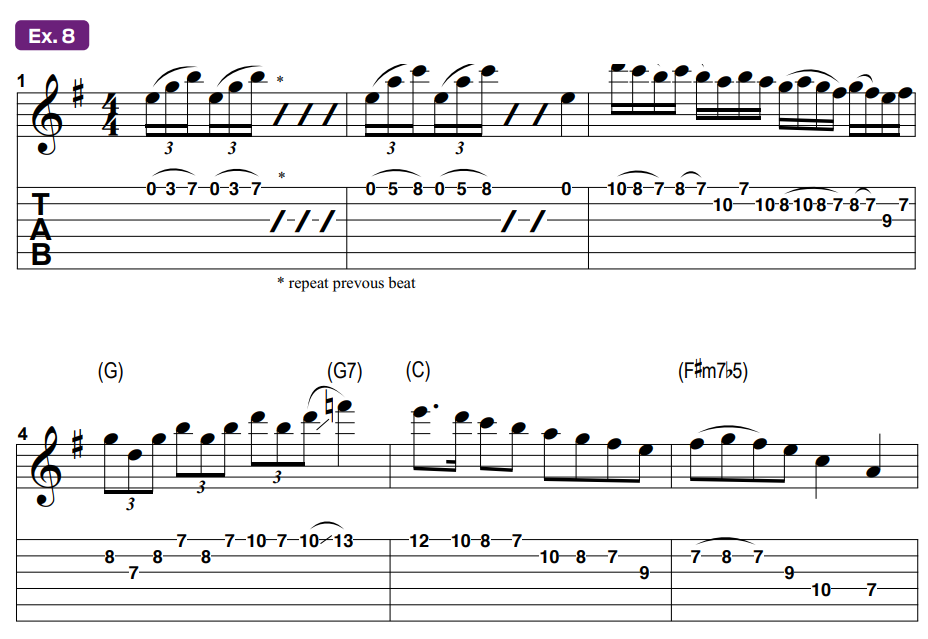Learn the Metal Mastery of Randy Rhoads
Let’s commemorate the 40th anniversary of the Ozzy Osbourne and Quiet Riot guitarist’s untimely passing with a deep dive into his genre-defining lead guitar style

Seventeen songs. For most artists, that would hardly amount to a substantial career. For Randy Rhoads, however, the 17 songs he tracked during his brief tenure as Ozzy Osbourne’s lead guitarist and co-writer on the albums Blizzard of Ozz and Diary of a Madman were more than enough to establish him as one of the truly outstanding rock guitarists of his generation.
Rhoads came from a musical family and, while in his late teens, taught guitar in his mom’s music store, Musonia, by day, then rocked the Sunset Strip in Los Angeles by night with local heroes Quiet Riot.
The group recorded two commercially stylized albums that were released in Japan in the late ’70s, but the band had trouble landing a record deal stateside. When Rhoads was offered the Osbourne gig in September 1979 (he allegedly blew the former Black Sabbath singer’s mind with some warm-up scales), he jumped.

What followed has become the stuff of legend. With Rhoads as his six-stringed gunslinger, Ozzy began one of the most successful solo runs in rock history, reigniting his career and helping to bring heavy metal into the mainstream.
Cuts like “Crazy Train,” “Mr. Crowley,” “Over the Mountain” and “Flying High Again” quickly became staples of rock radio, owing to their perfect combination of memorable riffs, anthemic choruses, mystic imagery and Rhoads’ classically influenced guitar virtuosity.
Onstage, Rhoads excited crowds with his unparalleled skill and theatrical stage presence, looking like a Spiders from Mars-era Mick Ronson while wielding a 1974 Alpine White Gibson Les Paul Custom, a custom-made Karl Sandoval black-with-white-polka dots Flying-V or a white prototype Jackson Concorde.
Guitar Player readers voted him “Best New Talent” in a 1981 year-end poll, and his unaccompanied live solos (one of which would be posthumously released on the 1990 live album Tribute) were a highlight of Osbourne’s concerts.
All the latest guitar news, interviews, lessons, reviews, deals and more, direct to your inbox!
Still, by 1982 Rhoads had allegedly become tired of the rock and roll lifestyle and was planning to attend college to study classical guitar full time.
'Guitar Player' readers voted him “Best New Talent” in a 1981 year-end poll
Sadly, on March 19, 1982, he was killed during a tour stop in Leesburg, Florida, when the small commuter airplane he was riding in crashed into Osbourne’s tour bus. He was only 25.
Rhoads’ legend and influence grew exponentially after his death. He is regularly included in “greatest guitarists” lists, has had several signature model guitars released posthumously in his honor by Jackson and Gibson, and is regularly cited as a favorite by new generations of prominent players.
In 2021, Rhoads was inducted into the Rock and Roll Hall of Fame. Rage Against the Machine’s Tom Morello has called him “the Robert Johnson of heavy metal,” a reference to the influence of his too-brief catalog and life.
Let’s commemorate the 40th anniversary of his untimely passing with a deep dive into his genre-defining style.

Rhoads was a master of creating memorable riffs, and Ex. 1 is loosely based on his most recognizable one: the driving F# Aeolian motif to “Crazy Train.”
Play it with a lot of gain (Rhoads was partial to Marshall 100-watt Super Leads and an MXR Distortion pedal) and a light palm mute on the single notes.
To kick it up a notch, try articulating the downstrokes on the 5th string with a pinch harmonic, as indicated by the abbreviation P.H., and play the E5 and A5 power chords with a 1st-finger barre, to keep your hand in 2nd position.

Ex. 2 draws its inspiration from the clever opening guitar salvo of “Steal Away (The Night),” which is also built around double-stops on the D and G strings that alternate against single notes on the low E.
To help dial in the original lick, try sequencing the fingering down from 7th to 3rd position and end on an F# instead of F.

Demonstrating another clever use of double-stops, Ex. 3 harkens back to the opening riff of “I Don’t Know” and the verses to “Crazy Train,” where Rhoads juxtaposes syncopated chord stabs against a palm-muted 16th-note “chug” on the open A string.
To avoid the monotony of repetition, he would often end his phrases with varying fills or turnarounds, much as I’ve shown here in the first and second endings.
Pay attention to the instrumental sections of “Over the Mountain” and notice how Rhoads seamlessly works a double-tracked baroque-like 16th-note melody and funky R&B double-stops into the same song, then play Ex. 4, which garners its mojo from the original track.

The example is in the key of D minor, but on the recording Rhoads tunes down a half step and plays similar phrases in C# minor and G# minor positions.
Years of gigging with Quiet Riot in Los Angeles rock clubs like the Starwood and the KROQ Cabaret helped Rhoads develop exceptional stage presence, and his pyrotechnically inclined lead playing excited and inspired fans.
The following examples detail some cool Randy-isms that he would throw into both songs and his unaccompanied solo spot.

Ex. 5 takes a pedestrian pull-off move on the 1st string of an A minor pentatonic scale to the next level.
While using your fretting hand to perform the C-to-A trill (rapid-fire alternating hammer-ons and pull-offs), reach over to the guitar’s headstock with your pick hand and push down on the 1st string behind the nut, raising the pitch of both notes a half-step.
Not only does this fretboard flex sound cool, it’s visually striking as well.

Engaging another cool pull-off ploy, variations of the rapid-fire sextuplets shown in Ex. 6 can be heard in “Crazy Train,” “Over the Mountain” and Rhoads’ extended solo cadenza on the live version of “Suicide Solution.”

When soloing, Randy often liked to rely on melodically sequenced motifs, several of which are featured throughout Ex. 7.
It starts with a repeating “fives-over-fours” blues lick on a D minor pentatonic shape, descends down a four-note sequence with an added b5 (Ab) and 6 (B), ascends back up a sextuplet pentatonic pattern then chromatically sequences a three-note double pull-off maneuver down the 1st string.
Listen to any Rhoads solo and you’re likely to hear at least one of these devices in action.
Randy’s mom, Delores, had a degree in music from UCLA and taught her son the basics of music theory on piano, encouraging his lifelong fascination with classical music.
While on tour, he would often seek out a classical guitar structor from the local college for a private lesson. As a result, many of Rhoads’ solos are thoughtfully structured and composed in a manner that drew inspiration from baroque music in general and J.S. Bach in particular.


Ex. 8 is templated on Rhoads’ extended lead break in the song “Mr. Crowley,” which follows a cycle-of-4ths/5ths progression in a minor key – D minor for the original, E minor for the example shown here.
Ours starts with repetitive sextuplet hammer-ons arpeggiating a root-position E minor chord in the first bar and a second-inversion A minor chord in the next.
Bar 3 sequences down a D major scale (D, E, F#, G, A, B, C# ) and is followed in bar 4 by an ascending G7 arpeggio (G, B, D, F).
A similar pattern happens in bars 5 and 6, this time with a C Lydian scale (C, D, E, F#, G, A, B) leading into an F#m7b5 arpeggio (F#, A, C, E).
Bars 7 and 8 create strong musical tension via a trilled ascending B major arpeggio (B, D#, F#) followed by a descending diminished-seven sequence that collectively outline a B7b9 chord (B, D#, F#, A, C) that resolves firmly to the Em tonic in bar 9.

Rhoads’ burgeoning interest in solo classical guitar can also be heard on the intro to “Diary of a Madman” and the solo instrumental piece composed for his mother, “Dee,” both of which inspired our final tribute, Ex. 9.
Although it is based on an A major key center overall, there’s a momentary mutation to the parallel A minor tonality in bars 2 and 3.
Bar 4 returns to A major, which is then followed by the V7/ii - ii - V7 progression in bars 5-8 (F#7 - Bm - E7).
Ozzy knew what he wanted but he didn’t know the music theory basics that Randy did
Delores Rhoads
The ii - iii - IV climb in bar 9 (Bm - C#m - D) is a deceptive move that ultimately resolves to a I - iv - I minor plagal cadence (A - Dm - A) in bars 10–12.
Play this passage fingerstyle with a free-flowing expressive tempo to tune into Randy’s unique approach to integrating hard rock and classical styles.
Randy Rhoads’ collaboration with Ozzy Osbourne was brief, but it forever changed the face of rock guitar and heavy metal music.
Perhaps their impact is best summed up by Delores Rhoads, who said, “[Randy] felt he changed a great deal with Ozzy. They worked so well together because Ozzy knew what he wanted but he didn’t know the music theory basics that Randy did.
“They encouraged and helped each other.”
